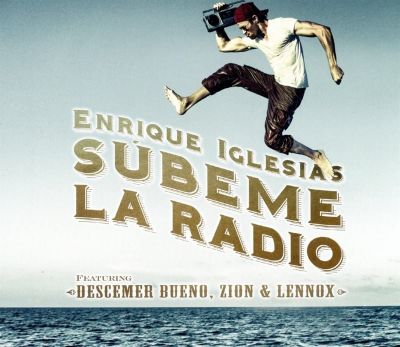Collaboration
Súbeme la Radio: meaning and harmony behind the hot dance hit

Súbeme la Radio single cover
Súbeme la Radio is a 2017 Latin dance track recorded by Spanish singer Enrique Iglesias in collaboration with Cuban musician Descemer Bueno and Puerto Rican duo Zion & Lennox. In addition to the version featured in the music video, the release includes seven more alternative remixes featuring a dozen diverse artists from Latin America, Africa, Europe, and the US.
Almost echoing the phenomenal success of Despacito and Échame la Culpa—the biggest hits of 2017—Súbeme la Radio stormed global charts and reached over a billion views on YouTube. All three songs are similar to each other in more ways than simply existing in the same genre—after all, they share the same harmonic progression consisting of just four chords.
The Súbeme La Radio lyrics (meaning Turn Up the Radio) depict a familiar scene of heartache in which the narrator coaxes his lover into giving him another chance. The titular request to crank up the radio and bring alcohol makes up the chorus appearing eight times throughout the song.
Watch Enrique Iglesias' Súbeme la Radio (Official Video) ft. Descemer Bueno, Zion & Lennox:
In the harmonic analysis of the Súbeme La Radio chord chains, the scale degrees (denoted with Roman numerals) show the following progressions in the key of A minor: Am–F–C–G or i–VI–III–VII. This simple chord chain is looped throughout all song sections, revealing a common songwriting technique in which the tonic minor chord rooted in the first scale degree precedes the chain composed of all three major chords of the Aeolian mode. Such progressions naturally generate a distinct major mood despite being written in a minor mode.
The same chord progression is looped throughout Despacito and Échame la Culpa. You can find more on that in our article on another Fonsi hit echoing Despacito chords.
It should be noted that the i–VI–III–VII progression itself is a rather clichéd formula used in many Latino pop songs including C'est la vie written by the Algerian folk musician Khaled as well as its Spanish cover Vivir Mi Vida released by Marc Anthony. Moreover, even modern classical composers do not hesitate to routinely loop this four-chord sequence as described in our article on the critical simplicity of Einaudi's best-known piece.
Discover more songs composed in Aeolian minor mode and check out their harmonic analysis in the following articles:
- 8 songs to introduce Aeolian mode and natural minor scale
- 6 songs combining harmonic minor and Aeolian mode
- Mariposa Traicionera: meaning and flamenco roots of Maná's top hit
- Livin' la Vida Loca: why is Ricky Martin's best song so catchy?
- A Dios le Pido: Juanes' Spanish lyrics behind the song success
- Suavemente: meaning of Elvis Crespo's best song
- El Farsante and 7 more songs by Ozuna in Dorian and Aeolian modes
- La Gota Fría: vallenato music masterpiece refashioned by Carlos Vives
- Porque Te Vas: origin and meaning behind Jeanette's best song
- Oye Mi Amor: the catchy harmony of Maná's most covered song



